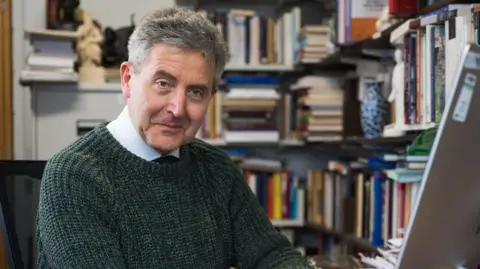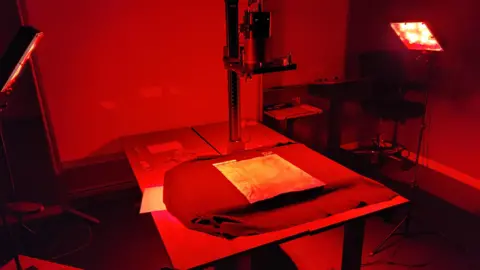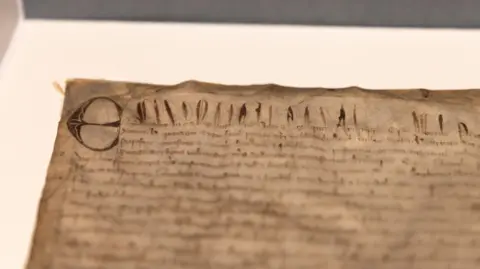Clarkson’s estate passed through a series of heirs to the Maynard family, then at the end of 1945, AVM Forster Maynard sold it at auction at Sotheby’s.
A London bookseller paid £42 for the document, months before Harvard bought it for a fraction of that price.
As for its value today, Prof Vincent said: “I would hesitate to suggest a figure, but the 1297 Magna Carta that sold at auction in New York in 2007 fetched $21m [about £10.5m at the time], so we’re talking about a very large sum of money.”
 Phil Barnes Photography
Phil Barnes Photography MB Toth/RB Toth Associates
MB Toth/RB Toth AssociatesBecause HLS MS 172 is badly faded in places, the academics worked not from the original but from pictures obtained using ultraviolet light and spectral imaging.
They discovered the handwriting and dimensions were consistent with those of the six previously known 1300 originals.
They also did a detailed check of the actual text. Because the wording of Magna Carta evolved over the years, the words and their order needed to be identical to that found in the other 1300 originals.
It passed this test “with flying colours”. The identity of the text was “the crucial proof”, explained Prof Carpenter.
 Lorin Granger/Harvard Law School
Lorin Granger/Harvard Law SchoolCongratulating the academics for their discovery, Amanda Watson, Harvard Law School’s assistant dean for library services, said this exemplified what happened when collections were opened to brilliant scholars.
“Behind every scholarly revelation stands the essential work of librarians, who not only collect and preserve materials, but create pathways that otherwise would remain hidden,” she said.
The professors are hopeful Harvard’s Magna Carta will soon be displayed to the public so its message and significance can be more widely known.